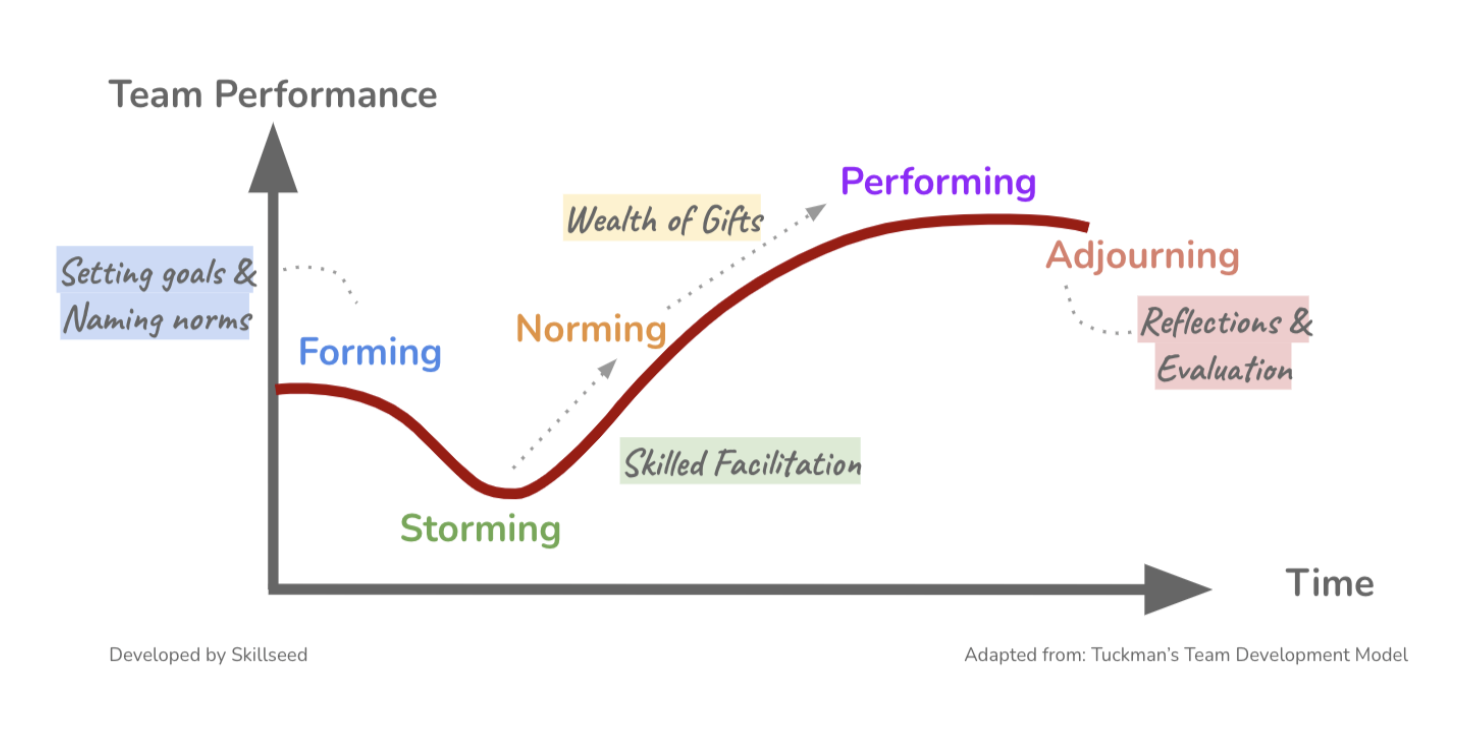By Faith Chong
Resident bookworm and shark lover in Skillseed. Nothing to do with sharks in this article - in case you’re wondering.
Just imagine the norms of our workplaces 5 years ago, compared to today.
The (pan)demic and societal pressures have evolved our ‘working norms and culture’ in a way that we would never have imagined 5 years ago. Today’s digital world of work, accelerated by the necessity to work from home during the (pan)demic has expanded and stretched employees’ capabilities to rise and cope with unexpected challenges.
According to Deloitte’s study of Human Capital Trends in 2021, this has resulted in the growing prevalence of employee agency and choice, pushing them to fulfil their potential and bringing the organisation to greater heights in the long term. Research also shows that the focus on teams, not just leaders, is the key to business performance. One of the key trends is the shift from the old fashioned hierarchical structure to one that empowers employees, where leadership seeks to inspire and connect instead of exerting power and authority.
The big question entails -- How can we develop people-driven teams, as leaders who inspire people success? We share 7 strategies that we can implement with our teams in this journey of people empowerment:
1. Identify the wealth of gifts in our teams
As trainers and practitioners of Asset-based Community Development (ABCD), this simple but powerful concept inverts the conventional narrative of ‘what are the problems and gaps?’ to ‘what are our assets and strengths’? By applying a strengths-based approach, we can see possibilities instead of problems, gifts instead of gaps.
Taking a leaf from the practice of polyculture which grows more than one crop species in the same space at the same time, resulting in both ecological benefits and increased crop yield, each team member brings a different set of skills and perspectives to a situation. In the best scenario, these skills and perspectives complement each other and the group becomes greater than the sum of its parts. As leaders, we can consider assigning team members with tasks that are aligned to their strengths.
Try this free High 5 test to identify the wealth of gifts in our teams!
2. Build a network of relationships
Like a healthy ecosystem that has many interconnected relationships, a team is as tight knitted as the quality of people's connections that are mutually interdependent. Beyond our conventional perspective of building a capabilities-based team, we should equally focus on building trust, relationships and mutual support for each other.
“We need each other.” - a flavour of interdependence
To help facilitate this process, we can identify the ‘Network Weavers’ in our teams -- those who seem to know everyone and are always eager to make connections. Tap on their gifts of social capital by empowering them to build meaningful connections through intentional conversations, check-ins or organised events.
3. Navigate the team development phases
Based on Tuckman’s Team Development Model which was published in a journal titled ‘Developmental sequence in small groups’, he identified the 5 team development phases of forming, storming, norming, performing and adjourning. While we may not be unfamiliar with these phases, it is important for leaders to be aware and help our teams navigate through the phases with clarity and intentionality.
Some practical strategies to aid our teams’ transitions may include setting goals and norms during the forming phase and employing facilitation techniques during the storming to norming phases. Being able to identify the strengths of our team members (recall strategy 1 earlier) would further fuel the push towards the performing phase, before closing with reflections or evaluation at the adjourning phase. These examples are non-exhaustive for each of the phases, the key is for leaders to help our teams navigate through with clarity to increase team effectiveness.
4. Co-create team norms
Every team has its own set of rules about what behaviours are encouraged and discouraged. Social permaculturist, Adam Brock, shares in his book, ‘Change Here Now - Permaculture solutions for personal and community transformation’, that effective teams make these rules transparent, name them early and continue to revise them as the team evolves. Imagine the visual of an iceberg -- what we can see from the surface represents our ‘named norms’, while ‘unnamed norms’ form the hidden / unseen parts of the iceberg below.
Through facilitated team discussions, members can co-create aspects of their team’s norms and bring everyone together on the same page. Try this Team Canvas Template on Mural together with our teams!
5. Equip team members with facilitation skills
A common misconception is that a facilitator is in-charge of producing something from the meeting or facilitation session. But in fact, this responsibility lies with the whole team, while the facilitator guides this process by setting the context and asking questions to navigate the group and move conversations along. Instead of relying on the same leaders to facilitate meetings and conversations, we can also equip team members with facilitation skills to be empowered and more effective in meetings.
Here’s a facilitation guide developed by Skillseed, a summary of selected questions to navigate a group facilitation session. Share this with our teams to get us started, or sign up as a team for an ‘Effective Facilitation’ workshop here!
6. Be a servant leader
Great leaders don’t just lead, they serve -- as servant leaders, we will need to walk the talk, embodying the values and ideals of the organisation and teams we are part of. Instead of demanding team members to get tasks done, we can take a step back and ask ourselves, as leaders, what are the missing gaps in our team and how can we serve in those areas? Offer that helping hand, be a mentor, or sometimes just sharing a listening ear can go a long way to build trust and relationships in our teams.
Try this challenge: Take time to identify and notice the gap(s) in our teams this week and reach out with a helping hand 😉
7. Apply the 4S Situational Leadership
In the Situational Leadership Model developed by P. Hersey and K. Blanchard, their research presented that there is no ‘best style’ of leadership, instead successful leaders are those who can adapt their behaviours to meet the demands of their unique situation(s).
They proposed that leaders can engage across 2 dimensions of behaviours -- ‘directive-task behaviour’ and ‘supportive-relationship behaviour’, depending on the level of readiness of their team members. This allows leaders to determine what leadership style is appropriate in any given situation, to achieve the highest probability of success. For example, with highly competent and committed team members (ie. peak performers), leaders can employ a more delegative leadership style. On the other hand, for team members who are enthusiastic but lack experience, leaders can employ a more directive and task oriented style.
“Before you are a leader, success is all about growing yourself. When you become a leader, success is all about growing others.”
- Jack Welch, Former Chairman & CEO of General Electric
P.S. These 7 strategies are merely the tip of the iceberg as we move towards building and developing people-driven teams. In fact, the screenshots within this article are sneak previews of the content that we cover in our ‘Thriving Teams’ and ‘Effective Facilitation’ workshops as part of our Training Suite in human-centred leadership and community engagement skills. A great way to start is to have our teams experience some of these workshops which are designed and facilitated in a highly experiential manner. Reach out to us at info@skillseed.sg to customise a workshop specially for your organisation!
Copyright © Skillseed Pte Ltd 2022. This material or any portion thereof may not, for all purposes (commercial or otherwise), be reproduced, distributed, transmitted or used in any form or by any means, without the prior written consent of Skillseed




